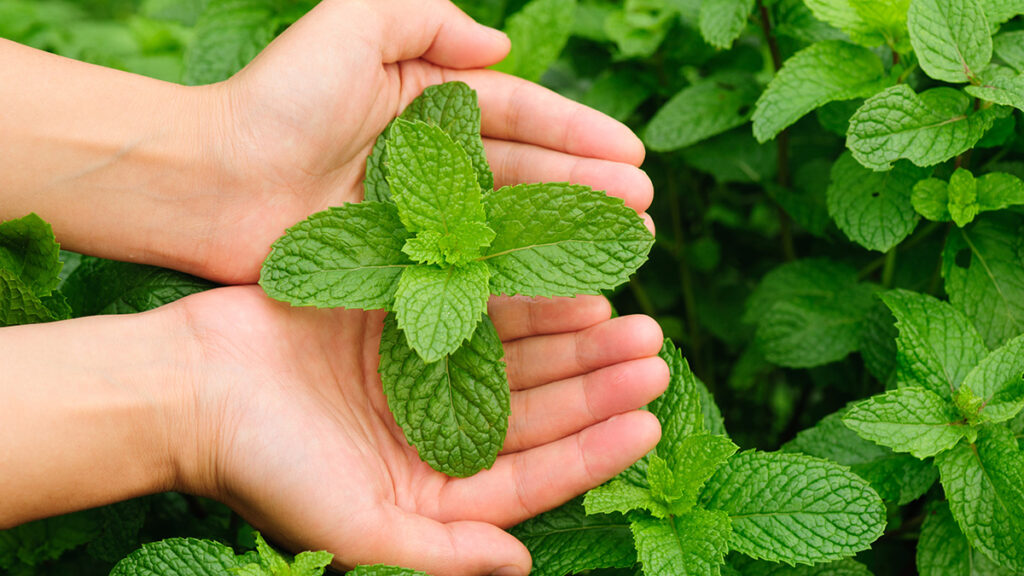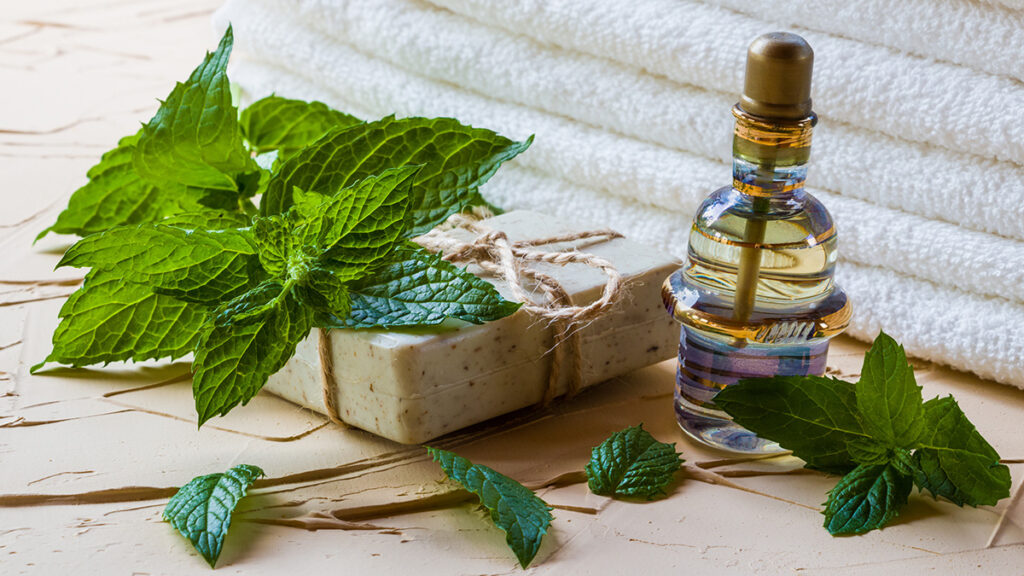The History of Peppermint: How a Mediterranean Herb Became the Unofficial Flavor of Christmas
This leafy green plant has come to signify the holiday season. And we're perfectly cool with that.
Dec 06, 2023
Whether you're snacking on a classic red-and-white twisted candy cane, indulging in peppermint-frosted cookies, or downing a mug of peppermint-flavored hot chocolate, nothing tastes more like the holidays than the cool, frosty flavor of peppermint.
But our love affair with this herb goes well beyond the month of December. Peppermint is the No. 1 flavor for hard candy, regardless of season. It's the first flavoring ever added to chewing gum. It's a fan favorite when it comes to ice cream — looking at you, mint chocolate chip — and the de facto flavor for anything designed to make our mouths feel fresher, from toothpaste to mouthwash.
And this isn't a new phenomenon either. Our affinity for all things peppermint extends thousands of years in the past.
A taste of history
Peppermint dates back to at least 1500 B.C. Many experts believe ancient people first began cultivating the leafy green for use in foods and as herbal remedies.

Thought to have originated in Northern Africa or the Mediterranean, peppermint gets its name from Greek mythology. As the legend goes, the god Hades was having an affair with a nymph named Minthe. When his wife found out about his infidelity, she turned Minthe into a common plant that grew like a weed and was constantly under foot. To soften his lover's fate, Hades altered the curse. He left Minthe a weed but gave her a sweet, calming scent to remind others of her presence as they walked over her. That's love!
Archaeologists have discovered 3,000-year-old dried peppermint leaves in the inner chambers of Egyptian pyramids. The reason? The oil that could be extracted from the leaves was considered very valuable, and rulers wanted to bring as much wealth with them to the afterlife as they could.
The ancient Romans often used peppermint to flavor special dishes served during feasts, including it in both sauces and wine. The decorative plant was also commonly presented on dining tables, and noblemen were known to braid its long stems into festive crowns and wear them. Ancient Hebrews covered the floors of synagogues with mint on special occasions because of its pleasant and calming scent. (No word on how Hades felt about that decision.)
Mint to be
Peppermint is one of more than 25 different species of plants within what botanists call the “Mentha" family. A natural hybrid of spearmint (which contains significantly less mint flavor) and water mint (which grows in aquatic environments and is much more potent), it's the perfect pairing of the mint flavor we love without being too overbearing.

Two main varieties of peppermint grow today: black and white. Black peppermint is typically produced in the United States due to its hardiness and abundance when growing. White peppermint, or English peppermint, is typically grown throughout Europe. This strain is less hardy and produces smaller crops but has a more delicate scent and oil — traits that make it more expensive overall.
The science of mint
Peppermint is one of the most popular flavors in existence today. It's used in everything from chewing gum to cookies and mints to chocolates and other sweets, not to mention a whole host of products that aren't meant to be eaten, such as soaps, perfumes, over-the-counter medications, and much more.

The biggest reason for its wide appeal resides at the chemical level, with a special substance known as menthol.
Pamela Dalton, a sensory scientist and member of the Monell Chemical Senses Center in Philadelphia, says that when people eat peppermint, they feel refreshed and experience a positive mood change. "Once consumed, menthol stimulates 'cool' receptors in the nose and mouth. These receptors are also responsible for the perception of stimuli, such as air flow," Dalton says. "So, when we eat peppermint, we experience a cooling sensation, especially when we breathe."
It's this cooling sensation, Dalton says, and the feelings it triggers that have caused people to crave peppermint for thousands of years.
A feel-good flavoring
Peppermint can do a lot of good for the body, although some of those benefits, Dalton explains, are purely psychological. “The cooling sensations that peppermint elicits when we consume it don't change anything physically," she says, “but instead just causes us to 'feel' more airflow — thus, the illusion of being decongested."
But peppermint has other powers as well. Studies have shown that smelling peppermint during or prior to exercising will cause people to work out longer and report less effort or fatigue, Dalton says.

Compounds in menthol also have been shown to ease inflamed tissues, calm muscle spasms or cramps, and inhibit the growth of bacteria and microorganisms. Peppermint oil has also been proven to possess serious pain-relieving and infection-preventing qualities. If that weren't enough, peppermint also helps speed up production of enzymes in the stomach and intestines, stimulating the gastric lining to break down food more quickly and easily. It's this powerful ability that led to the development of after-dinner mints in the 1960s. (Leaving mints on your hotel pillow is a whole other story.)
The scent of peppermint can also aid in weight loss, helping to quell food cravings and alleviate hunger. And it can even fight headaches. In 1996, German researchers found that the scent of peppermint oil could be just as effective as 1,000 milligrams of acetaminophen in helping to relieve headache pain.
Holiday wonder mint

So how did an herb with such a long and varied history become the flavor of the holiday season? That, Dalton says, is a mystery we may never solve.
“Because of its cooling properties, peppermint should be more popular in hot weather," she says. Instead, though, we flock to it at the end of the year most likely because of all the wonderful and festive desserts and baked goods that contain peppermint.
And, of course, we would be remiss if we didn't mention candy canes, those crunchy confections that have become one of the defining symbols of Christmas. Their potent peppermint punch has ultimately come to define the festive end-of-year period for many.







